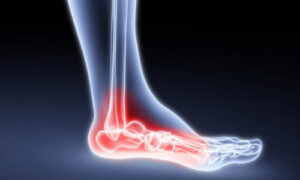Foot and Ankle Disorders
Understanding Foot and Ankle Disorders: Causes, Symptoms, and Care
What cause ankle disorders?
The causes of ankle disorders vary and can include running, jumping, and overuse. Other common causes of ankle sprains and fractures include:
- twisting or rotating the ankle beyond the normal range of motion
- tripping or falling
- landing on the foot with increased force
- Other injuries that can lead to tendonitis in the ankle or Achilles tendonitis can be caused by:
Lack of conditioning for the muscles in the leg and foot
excess strain on the Achilles tendon, the tendon that connects your calf muscles to your heel
bone spurs in the heel that rub on the Achilles tendon
untreated flat feet leading to additional stress on the posterior tibial tendon

- lack of conditioning for the muscles in the leg and foot
- excess strain on the Achilles tendon, the tendon that connects your calf muscles to your heel
- bone spurs in the heel that rub on the Achilles tendon
- untreated flat feet leading to additional stress on the posterior tibial tendon
Different types of arthritis (inflammation of joints and tissues) can also affect the foot and ankle:
- Osteoarthritis is a degenerative type of arthritis that typically begins in middle age and slowly progresses. Over time, cartilage between your bones becomes worn down. This results in pain and stiffness in your joints.
- Rheumatoid arthritis is an autoimmune inflammatory disease. It occurs when your body mistakenly attacks its own healthy tissues. RA affects your joints and also destroys cartilage.
- Post-traumatic arthritis occurs after an injury to your foot or ankle. Stress from the injury can cause your joints to become stiff or inflamed, even years after the injury occurred. The cartilage covering the ends of the bones will be diminished.
Symptoms of ankle disorders?
The symptoms of ankle disorders will vary based on the specific type of injury. Common symptoms include:
- pain
- swelling
- stiffness
- problems moving the ankle
- inability to put any weight on the ankle
- difficulty walking
- bruising
Tendonitis and Achilles tendonitis may produce similar symptoms, but can be accompanied by:
- pain along the back of the heel that gets worse throughout the day
- thickening of the tendon
- swelling that gets worse with physical activity
- loud popping sounds at the back of the heel, signaling a ruptured tendon; if this occurs, seek emergency medical attention
How can you prevent ankle disorders?
You can prevent ankle disorders by maintaining good physical fitness, strength, and flexibility. Regular exercise is crucial for building strong bones and maintaining good balance. Other behaviors that can prevent ankle disorders include:
- stretching and warming up before and after physical activity
- wearing comfortable shoes that provide ankle support
- paying attention to your body’s warning signs and not pushing yourself too hard
Most ankle injuries can be avoided by taking the proper precautions before strenuous exercise. If you do feel unusual pain in your ankle during physical activity, or suspect an injury, contact your doctor immediately.

